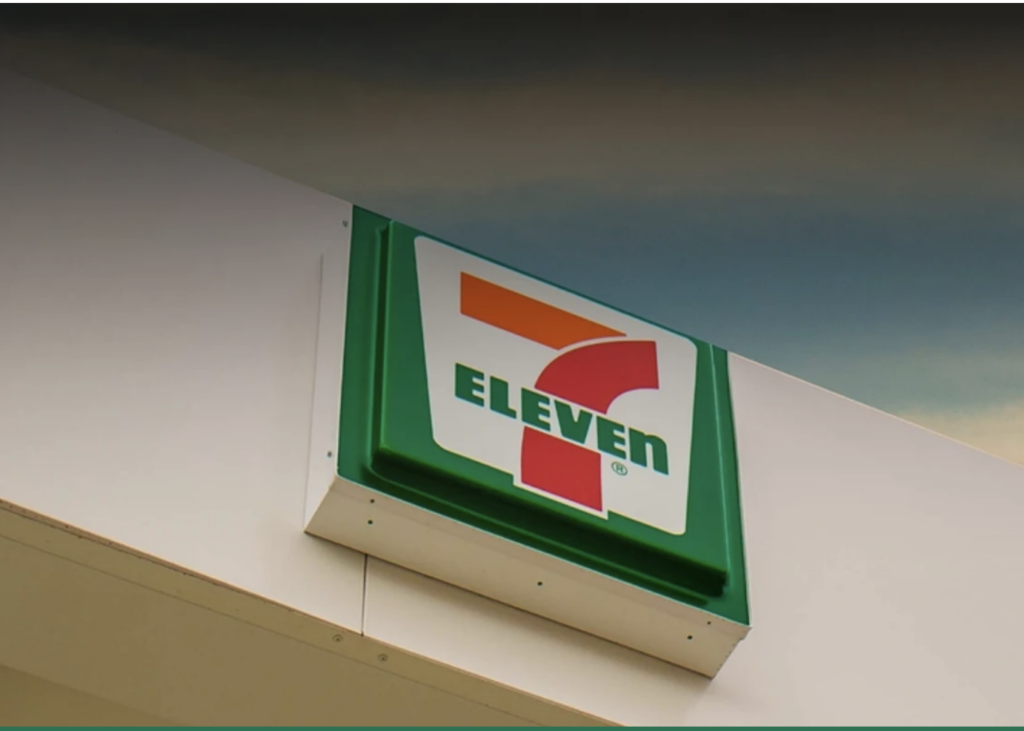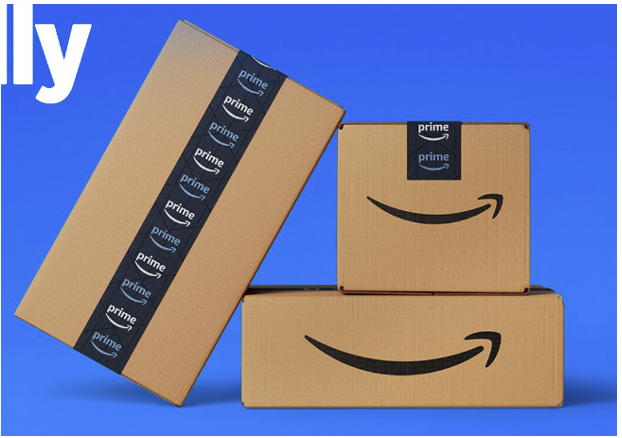An effective consumer engagement strategy requires balance and moderation — yes, even with retail media.
Big news: It turns out that there are still advertising opportunities besides retail media. They might not be as effective. They might need retail media’s first-party data to be more effective. And many of them are being incorporated into the advertising opportunities offered by retail media networks.
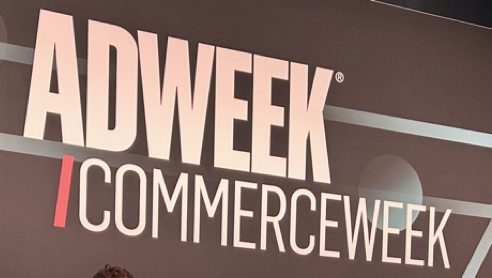
But they’re still out there, both new tactics (CTV) and old (direct mail, if you can believe it). And they can still be employed by brand marketers to successfully reach consumers and drive awareness, conversion or — increasingly — both as the purchase journey continues to simultaneously fragment and blend (if that’s even scientifically possible):
- Fragment in terms of the ever-growing number of communication touch points that are now informing and influencing shopping;
- Blend in terms of the steps between awareness and purchase that, in many cases, are no longer there.
All hyperbole aside, though, the world of commerce marketing isn’t all about retail media, even though the topic continues to dominate business media headlines and marketing team agendas. But it clearly was far less the focus of Adweek’s 2023 Commerce Week, held in downtown New York in mid-July, than it was a year ago at the 2022 event.
That, assuredly, was partly driven by the list of event sponsors, which this year contained fewer retail media networks and more solution providers specializing in other consumer engagement tactics. But even the discussions about retail media took a more pragmatic, level-headed tone.
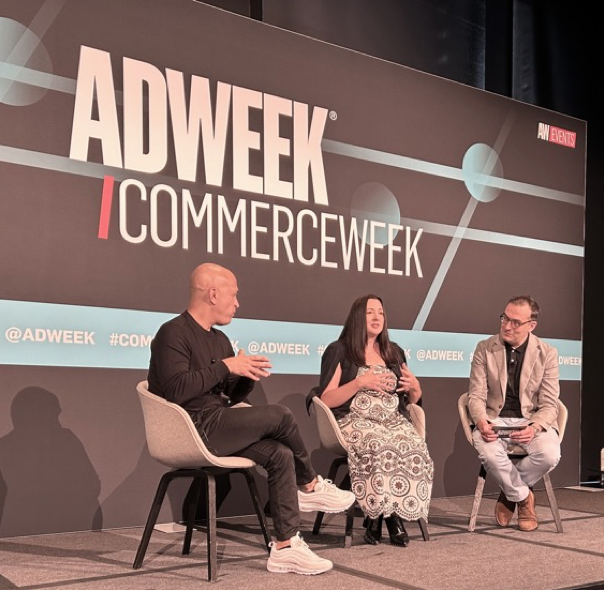
Retail media “is one channel of our bigger plan. We need to educate [internally] about all the options that are out there,” said Leslie Miller, Chief Digital & Communications Officer for Nutrition and Ice Cream at Unilever (in center at right). “This is part of your brand plan, [but it’s] another way to tell the same story” being presented through a range of other channels, too.
That type of “bigger picture” strategic thinking about the need to take a balanced, integrated approach that utilizes all relevant consumer touch points was an underlying theme throughout the conference. For instance, even while he called connected TV “a big unlock” for the performance-focused strategy at Claire’s Stores, VP-Consumer Insights and Digital Marketing Chris Duncan made it clear that the tactic is “part of the media mix, not the only thing.”
The following article looks at some of the various ways that commerce marketers are effectively reaching shoppers by employing a variety of engagement tools, some of which are being impacted by retail media, and all of which are being fueled by data and analytics.
HOLISTIC PLANNING
Retail media is “an integral part of our media mix,” said Janice Cooney, Senior Director of Customer Development for Kenvue, while speaking with CVS Media Exchange VP/GM Parbinder Dhariwal about the need for a holistic view of the business when planning shopper campaigns.
To do so, networks and their brand partners need to “step back” and look at concurrent in-store campaigns and other promotional plans to see how the messages can be aligned and amplified, suggested Dhariwal.
Retail media is “part of the retailer relationship conversation, part of the full package that we can bring,” but only “another piece of that story,” said Miller, doubling down on her previous comment. Under Miller’s guidance, Unilever is working to align its digital, traditional marketing and commerce marketing activity to create “a holistic marketing plan where everything comes together to drive the business plan.”
“As the traditional purchase funnel collapses, as consumers become more fluid in the way they shop, we need to think about how we can reach them differently by integrating our way of working,” said Nicole Rainey, Senior Retail Media Manager at Mars Wrigley (below right, with The Mars Agency’s Ethan Goodman). “We’re challenging ourselves to think more omnichannel. And that requires us to integrate both vertically [across retailer-focused functions] and horizontally [across media plans].”
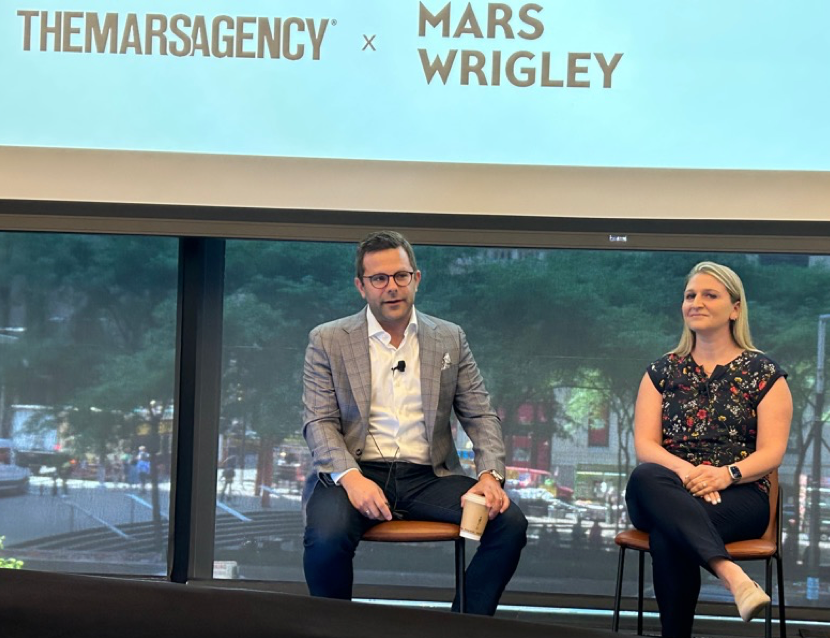
HOLISTIC ACTIVATION
Speaking of the purchase funnel, “The days of every sales presentation needing a funnel are over,” said Dhariwal. The shopper journey now changes based on the underlying need state for each particular purchase, he said. One constant, however, is that “it’s all about convenience.”
Technology has eliminated all boundaries between awareness and purchase, and marketers need to follow suit. Most advertisers consider Macy’s retail media network to be a conversion tool, but it’s also effective for acquiring new customers, said Melanie Zimmerman, VP-Head of the Macy’s Media Network. Shopper are looking for inspiration while advertisers want storytelling opportunities, so Macy’s is working to create opportunities that deliver both while also driving to conversion, she said.
“We as marketers tend to go functional” with retail media, said Rose Jia, Head of Growth Marketing for Amazon Grocery. “Yes, we’re driving that great performance. But we’re losing the reason behind [the action. We should] utilize the creative to really talk about the end benefit” and give shoppers the reason to buy, she suggested.
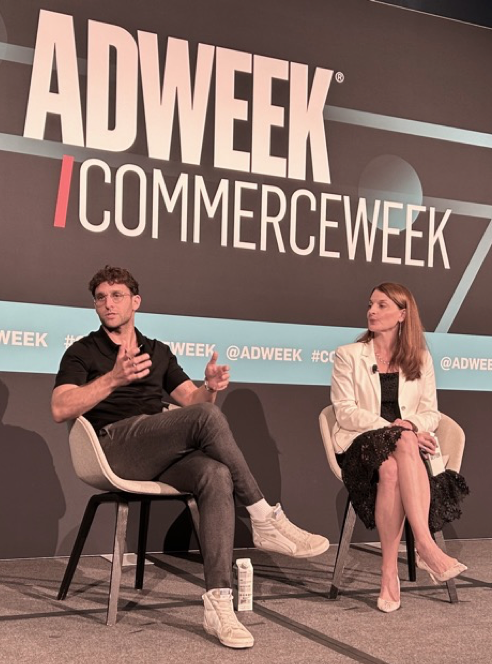
Gopuff is actively working to “build solutions that will collapse the funnel” by moving beyond its own ecosystem to guide consumers to the purchase, said Daniel Folkman, SVP of Business (at left, with Digitas North America’s Amy Lanzi.) for the on-demand fulfillment retailer. That includes “building tools and solutions for advertisers” that give them direct contact with shoppers, he said. “We’re not concerned about which digital storefront the purchase takes place in.”
CUSTOMER INSIGHTS
The ability for retail media networks to provide first-party data “that is completely unique to any data available elsewhere” is one of the primary reasons for their wild success, noted Ethan Goodman, EVP-Commerce Media at The Mars Agency.
CVS Media Exchange’s database of transactions from the retailer’s 74 million ExtraCare cardholders “is really the crux of the opportunity” because it “helps us understand who the shopper is and the perfect time to reach them,” said Cooney at Kenvue.
However, “first-party data isn’t the end all, be all,” warned Jay Picconatto VP-Advanced Marketing Solutions at General Mills, who instead recommended a “cocktail recipe” of relevant data that should include weather patterns, household demographics and shopper behavior.
General Mills is using its internal data to build better targets at retailers and also to gain a broader picture of the complete category. Bringing your own insights to the table “can deliver value to retail partners and foster stronger conversations,” said Picconatto (below, with Profitero’s Sarah Hoffstetter at left and MikMak’s Rachel Tipograph at right).
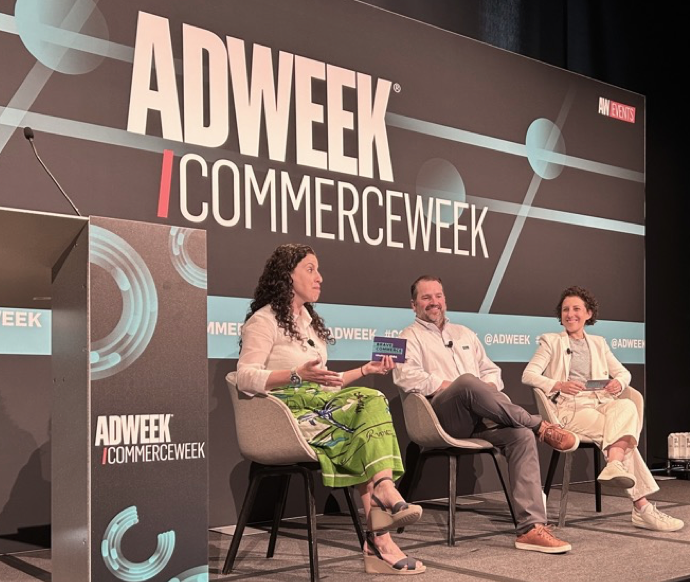
The foundational strategy for understanding customers at Victoria’s Secret/Pink is to “listen, listen, listen … wherever we can hear from her,” said Sarah Sylvester, EVP of Marketing. The retailer is using its first-ever rewards program to build a community of brand loyalists it will mine for insights.
“Consumers will give you their data if you offer them something in return,” said Diana Haussling, VP-General Manager of Consumer Experience and Growth at Colgate-Palmolive. “But once you cross them, you’ve lost their trust. So you need to protect their data … and play the long game to build lifetime value.”
When Colgate-Palmolive began working to bring all of its marketing and commercial activity together, building out the data & analytics team was a major priority “because their insights drive everyone else’s strategy. … They provide the unlock and the magic,” said Haussling (at right).
Colgate-Palmolive’s overarching goal is to connect with consumers by “closing some of the need gaps they didn’t know they had” while ensuring that the marketing isn’t a disruption in their lives, she said.
ARTIFICIAL INTELLIGENCE
Generative AI and other forms of artificial intelligence are helping commerce marketers find solutions to practically every job in their to-do lists.
On the customer-facing side, Victoria’s Secret is using AI to provide product recommendations on the website. It has also piloted a program for personalized emails (with Movable Ink’s Da Vinci) and “have seen a huge lift in sales already,” said Sylvester. In the back-office, the retailer is using it for customer lifetime value modeling and “next-best” actioning.
Email marketing agency Westfield Creative is using ChatGPT to write headlines and subject lines. “It’s our friend, our assistant,” said co-founder Emily Ryan. The technology provides a starting point, “and then you use your expertise to make the right choices,” she said.
Can make email “less spammy” through personalization, said Kenneth Chestnut, Global Head of Mailchimp Ecosystem, which already offers more than AI-embedded 20 tools. For one, it’s creating customer journeys that target campaigns based on searches or product views. The technology does the “undifferentiated lifting so marketers can focus on their key differentiation,” Chestnut said.
With so many consumer touch points that now need to be addressed — it’s estimated that the number of touch points required to convert a customer has tripled — AI can effectively maintain a holistic look by aggregating multiple sources and then creating all the necessary content.
For retail media, generative AI is bringing “unbelievable computational power” to alleviate the resource challenges involved with such labor-intensive tasks as predictive planning, customized creative, and media buying, said Ethan Goodman, EVP of Commerce Media for The Mars Agency. If the technology can handle the first 80% of the workload in those areas, it will free up the “human” subject matter experts previously bogged down with hand-to-keyboard activity to focus on more strategic activities.
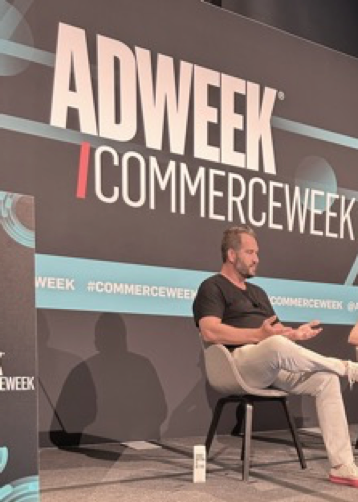
Thanks to technology, “Personalization at scale is not an oxymoron,” said Risa Crandall, at SVP-CPG and BevAlc Strategy and Sales at Aki Technologies. In a recent campaign for PepsiCo’s Mtn Dew, Aki used one foundational video to create 245,000 different custom versions — all of which were shoppable.
AI is the “foundation of the future of measurement” as well as the conduit for developing optimal content to fit different environments, said Michael Burke, Managing Director for Luxury, Branded Apparel and Durables at Google (above right).
However, “AI should be the most boring thing you do in 2023” as brands focus on getting the basics right before looking for more innovative use cases. “AI will change the world, but in the short term there are things to do that will drive near-term profitable growth,” Burke said.
DIRECT TO CONSUMER
Although direct-to-consumer interaction is critical to consumer engagement and a vital part of the conversion process, the idea that challenger brands can continue growing to any level of sustainable scale without working through retail seems to be officially dead — as is the concept of established brands shifting their focus away from the retailer model to any significant extent.
DTC darlings Glow Recipe and Love Wellness are perfect examples of the former: The former beauty brand is now available at Sephora, while the latter homeopathic health brand struck deals with Ulta Beauty, then Target, and rolled out to 1,600 Walmart stores in July. The pure DTC marketplace has experienced “huge attrition to Amazon, which is “just so easy” for consumers to shop, said Bosworth.
While it’s true that shopper conversion now encompasses “any format, any time, any moment … I still have a business that’s focused on specific retailers,” said Unilever’s Miller.
“We’re good at putting stuff on the shelf,” said Picconatto. Meanwhile, the DTC brands General Mills now competes with “are really good at truly understanding their audience and quickly reaching them in relevant ways.” Therefore, traditional brands need to modernize their marketing strategies and “teach everyone how to do great, data-driven marketing.”
Still, the “next existential crisis” for brands is to get direct access to consumers, which is one major reason that Gopuff is moving beyond its own platform to explore the “enablement space” with advertisers. “We want to take what we’re really good at [logistics and fulfillment]” and use those capabilities “to open the idea of instant commerce elsewhere,” Folkman said.
SOCIAL MEDIA
Social media has emerged as another full-service commerce marketing channel. Nine-year-old Glow Recipe originally relied on social marketing in the early years “simply because we couldn’t afford anything else,” but continues the practice now — on TikTok in particular — because it still works both for awareness and conversion. “It can drive massive sales,” said Christine Chang, Co-founder and Co-CEO.
Likewise, Love Wellness successfully built a community of followers exclusively through social media for 2.5 years before it ran any paid advertising, according to founder and CEO Lauren Bosworth (below left, with Adweek’s Ann Marinovich). Granted, Bosworth’s status as a former reality TV star likely contributed to the grassroots success.
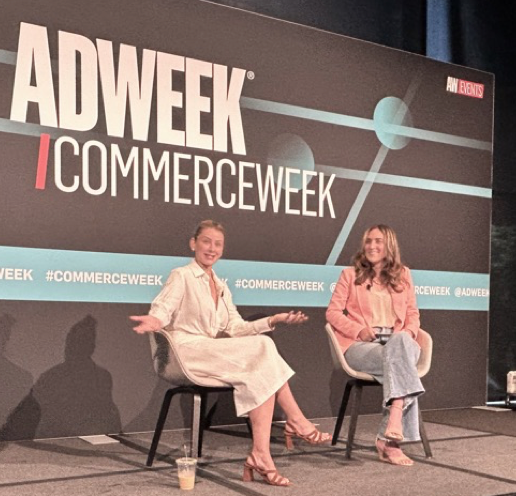
Gopuff is working to make social commerce a “shopper storefront” for its advertising partners, according to Folkman. “Everything is consumed in the moment for Gen Z and Millennials.”
An increasingly important piece of the social outreach is the role of influencers, who provide “a window into the customer,” said Chang. However, Glow Recipe isn’t interested in partnering with influencers boasting large audiences but “finding that authentic fit [with] people who are already passionate about the brand. All customers can be influencers,” said Change. An upcoming out-of-home campaign will star influencers from the brand community picked anonymously to participate.
“Harness the power of influencers and creators once you have established what you want your brand to be,” advised Haussling. “Get your most passionate advocates to engage. You want an active, vocal, loyalty community base that understands your brand.”
EVOLVING CONSUMERS
The marketing world has been acutely focused on Millennials for about two decades and more recently has overtly turned its attention to Gen Z as that group’s direct spending power increases.
But a critical piece of both generations has received decidedly less attention: Latinos, who comprise 20% of the total U.S. population but represent 23% of Millennials and 26% of Gen Z. What’s more, they represent 50% of all U.S. population growth and 83% of labor force growth.
Proper representation has become vital to driving engagement across all ethnic groups, with 75% of consumers saying they’re more likely to buy a product when they see themselves represented in the ads, according to Edelman. This fact is no truer than within the Latino community, where 71% expect personalization in the marketing messages they receive, 76% are frustrated when they don’t get it, and 78% are more likely to buy again if they do.
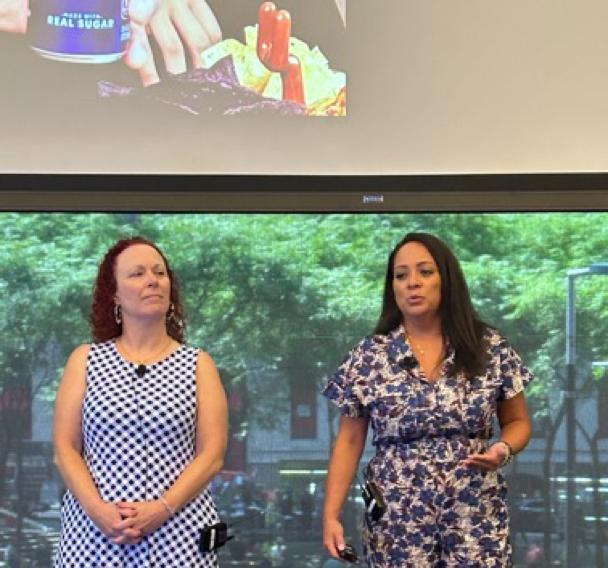
“This is a target we really need to understand now,” said Esperanza Teasdale, VP-General Manager of the Hispanic Business Unit at PepsiCo (on right at left, with Aki Technologies’ Crandall). “This is an ‘and’ strategy, not an ‘or,’” which therefore requires incremental spending, she advised.
The presence of many nationalities and cultures within the Latino community makes it even harder to get personalization right. PepsiCo works with Aki to personalize its messaging to match the preferences of numerous subsegments of Latinos based on product types, flavor profiles, language preference (Spanish, English or Spanglish), time of day, shopping behavior, purchase persona (loyal, lapsed, new), and other factors.
However, “it’s not just about representation” in advertising, said John Reed, U.S. General Manager for L’Oreal’s CeraVe, a skincare brand with a strong focus on the needs of African Americans. Marketers also need to consider “how people access the information, and what information they need.” That’s why CeraVe is now moving beyond ethnically focused assortments to aid with community services such as access to dermatology.
Shopping behavior is changing dramatically, too. For brands, one of the most alarming shifts is that “Customer loyalty is an oxymoron,” according to Ben Felix, the connected commerce platform’s CMO (at right). Stackline aggregates ecommerce data from Amazon, Walmart, Target, Best Buy and other top retailers.
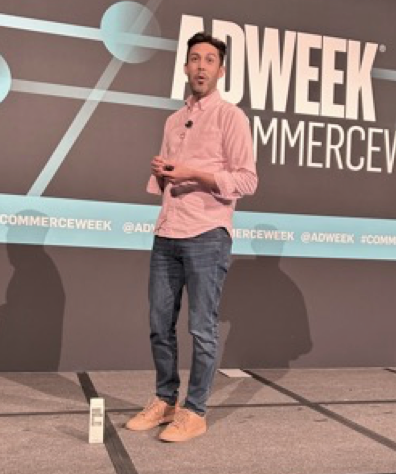
In fact, the average brand only retains 12% of its customers these days (although grocery brands do better on average at 29%). While 37% of those departing customers exit the category entirely, 51% switch brands.
“You do not have customers. You have people who buy your products,” Felix said. The average shopper devotes just 32% of their category spend on their favorite brand. “So if you have a great retention rate, you win your category,” he noted.
A major part of the problem is the aforementioned inability for brands to engage directly. “Brands don’t know who 97.2% of their shoppers are” because the purchase data is owned by the retailer, Felix noted. But if 20% of a typical brand’s shoppers account for 53% of your sales, “What about getting more from them?”
CONCLUSION
One idea that was clear throughout the event’s two days is that the commerce marketing has become — or at least needs to be — a lot more strategic for brands than the “below the line” functions that preceded it. And that requires brand organizations to think differently about the way they go to market.
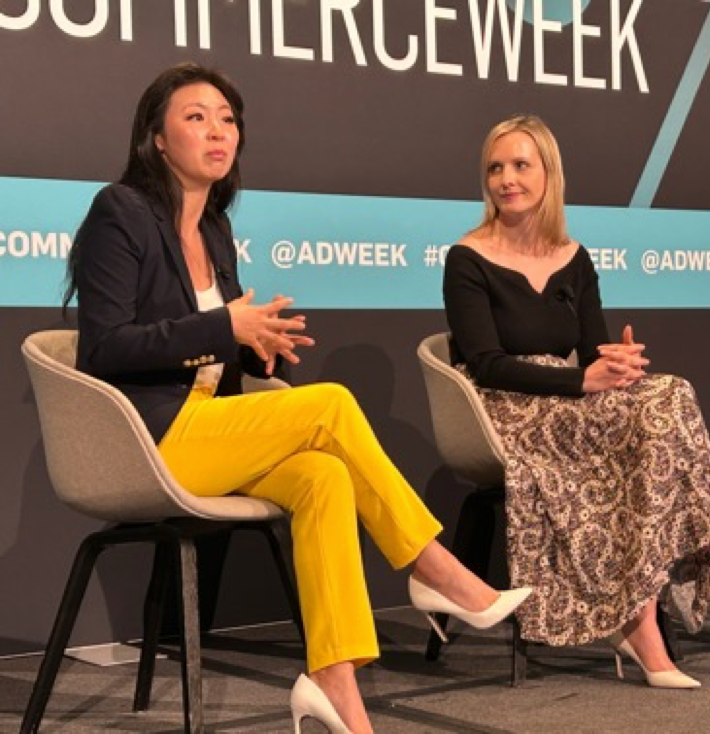
“Stop using the words ‘spend,’ ‘budget’ and ‘cost.’ CFOs will cut that,” advised Jia at Amazon Grocery (left, with Zimmerman of Macy’s at right). “Talk about ‘investment.’”
“Annual plans don’t work anymore. Weekly plans don’t really work. You just need to get everyone roughly moving in the same direction,” said Picconatto at General Mills, while endorsing the need for agility as more important than predictive analysis.
“Our traditional way of doing things does not resonate with consumers today, Your brand will not reach new audiences that have different expectations of what engagement looks like,” warned Haussling (below, with Bazaarvoice’s Doug Straton). “The traditional model is not going to do it anymore. You are not just entitled to be there tomorrow.”
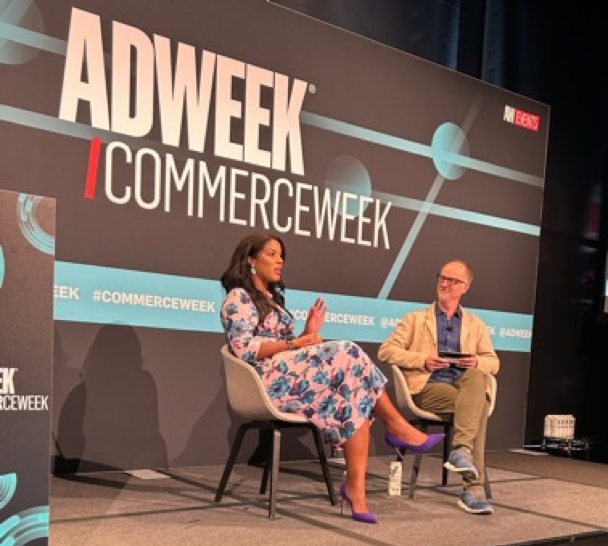
“The challenge is change management more than the tech or the data,” said Picconatto. “There is always some data around that will do what you need it to do. But changing the mindset of the brand manager is harder.”
____________
About The Mars Agency
The Mars Agency is an award-winning, independently owned, global commerce marketing practice. With talent around the world, they connect people, technology, and intelligence to create demand and drive profitable, sustainable growth.

